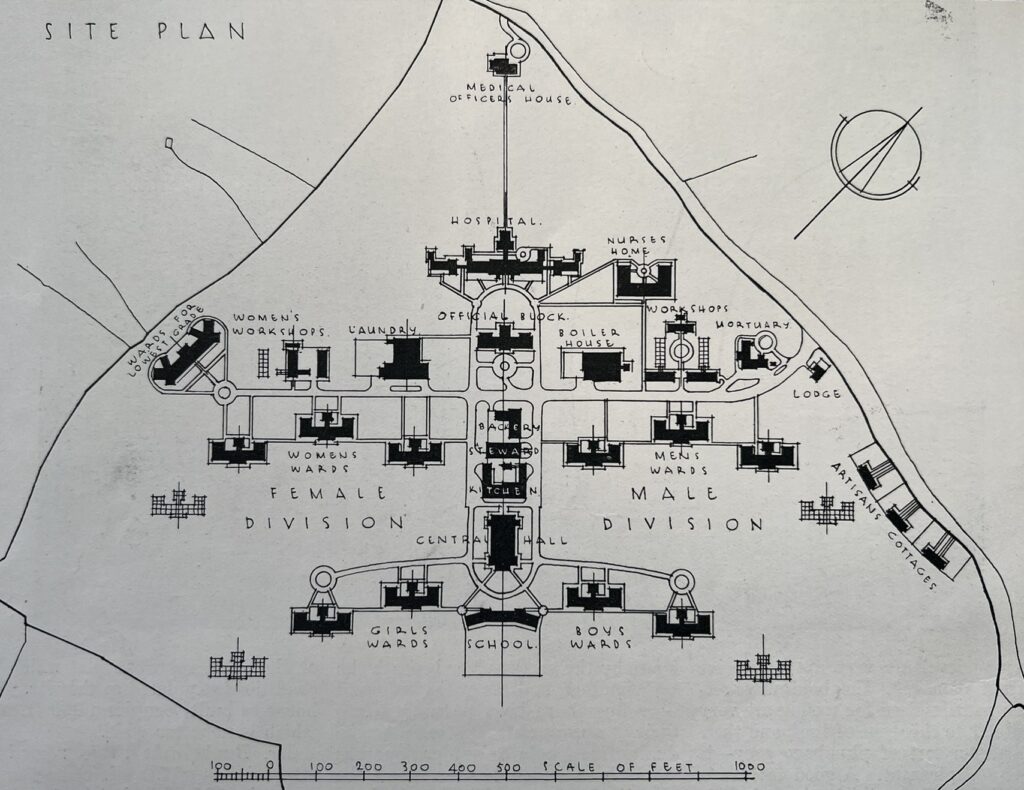
Hortham Colony was situated about 8 miles from the centre of Bristol. Just off of the A38 and later sandwiched between the M4 and M5 motorway. Following its completion in 1931 it comprised of ten wards or ‘homes’ for the patients, a ‘Low Grade’ Ward, Workshops, Laundry, School, a Hospital, Nurses’ Home and Administration Block as well as other ancillary buildings that were important to its day to day operation. I refer in this article to all the original buildings as the site was planned and built, lots of other buildings were added later or adapted through the years as the Colony grew.

The structures were contained within a box, resembling a cross. With the administration building at the ‘heart’ of the cross. The site was arranged in four tiers; the main Colony road intersecting the middle. The main entrance to the Colony was from Hortham lane. The original buildings on the upper side comprised of the administration buildings, workshops, laundry, a hospital, nurses’ home and low grade ward. Male and female patients were kept separately as you can see from the site layout, females on the left side, males on the right.
The buildings on the southern side comprised the patients’ homes, school, kitchen and bakery, a recreation hall and steward’s stores. All the buildings were linked up with a central heating supply, electric lighting, telephone and fire alarm systems which are carried in subterranean tunnels.
Patients Home (Ward)
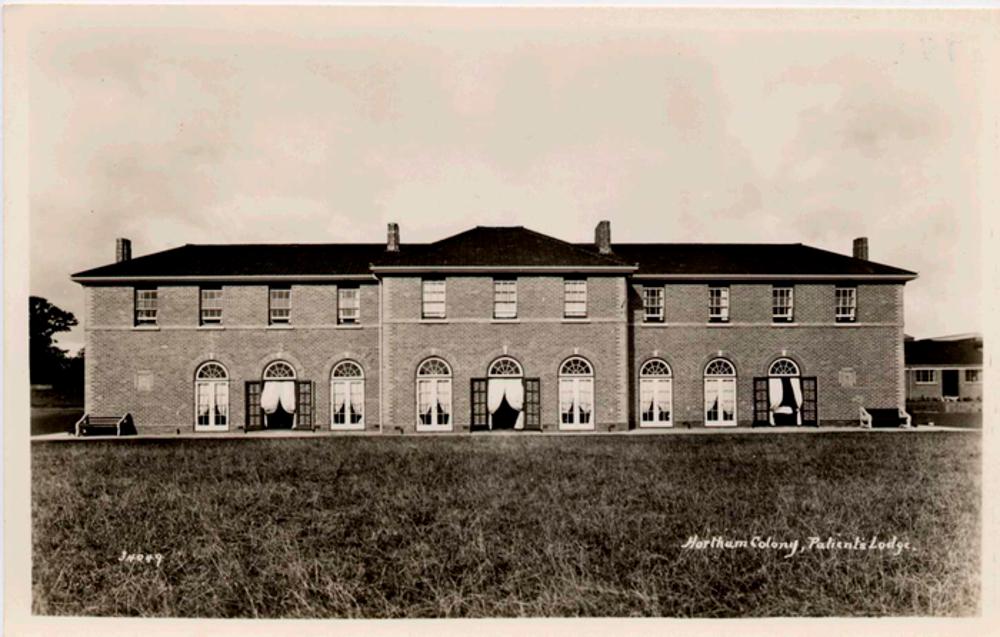
The patient’s homes, or wards were all named after local parishes or suburbs except one ‘James’. They were all originally erected on the South side of the main road through the Colony. They all consisted of two storey buildings and were designed to harmonise with each other in Cattybrook pale and mixed brindled facing bricks. Each home contains three dormitories, offices and nurses rooms on the first floor. Then three dayrooms, two bedrooms, nurses room and kitchen on the ground floor. The distinctive windows on the lower floor were south facing that open directly on to the terrace.

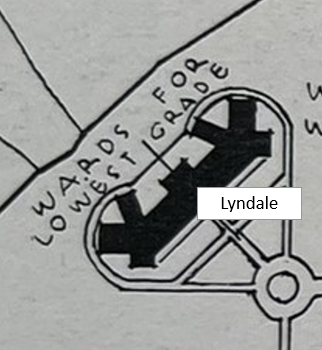
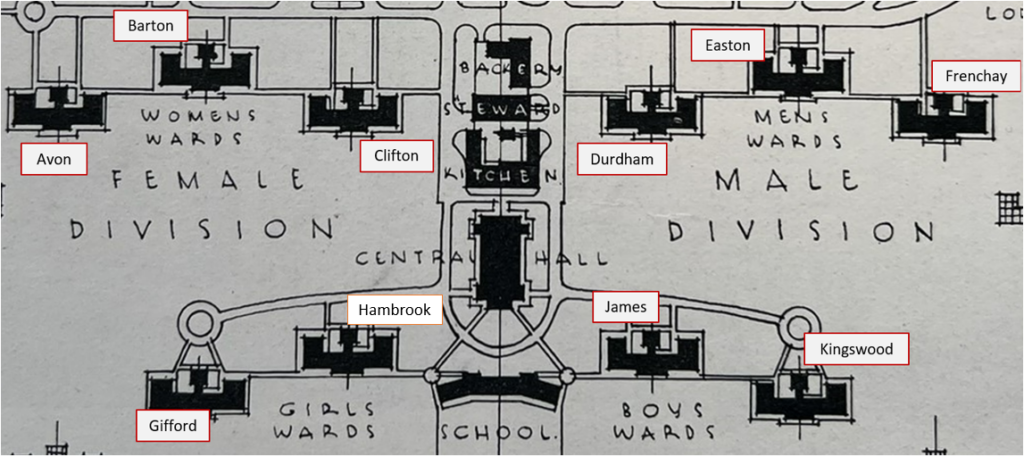
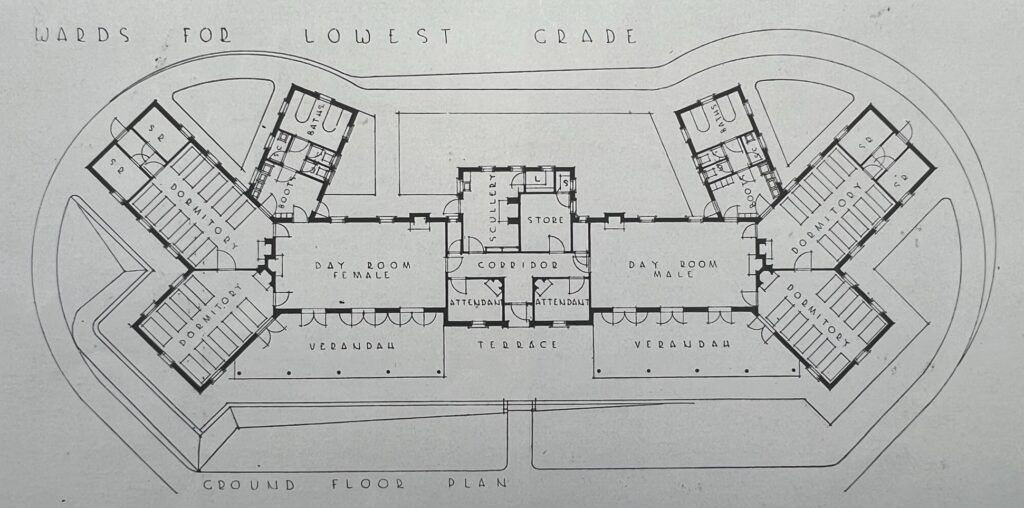
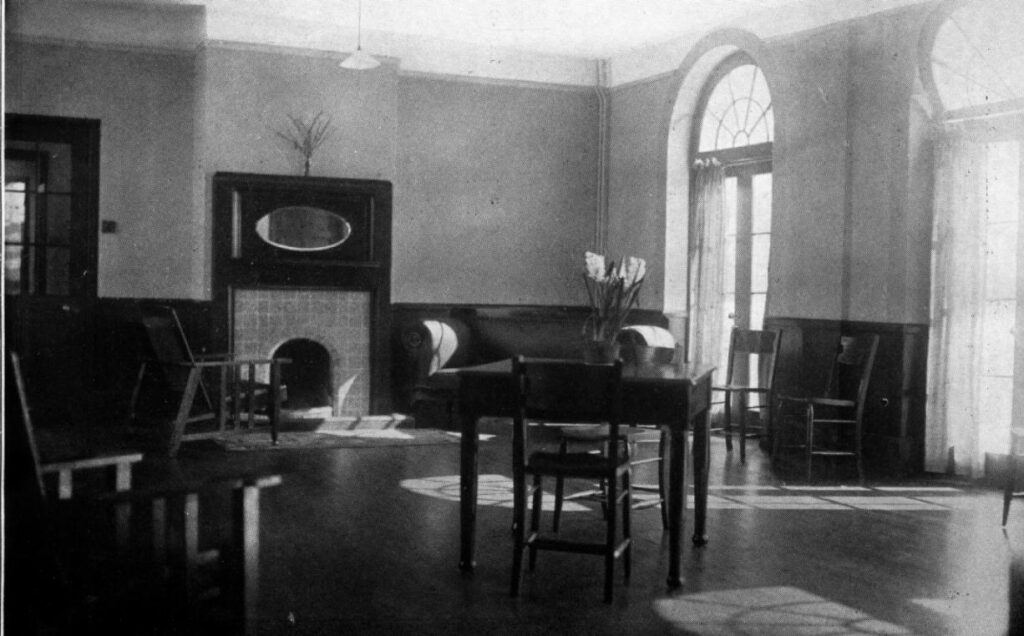
Administration
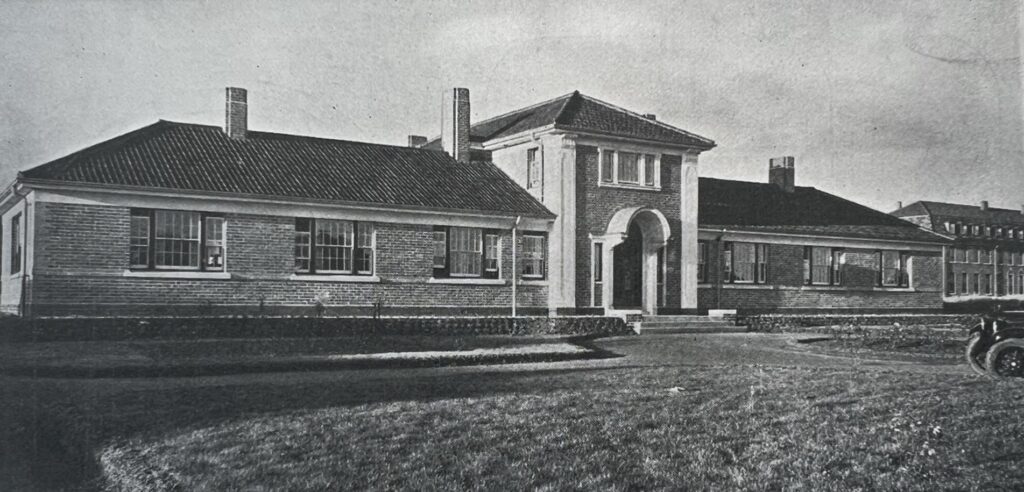
The administration block was at the heart of the Colony in the centre. The ground floor contained the offices of the Medical Superintendent, Matron, and staff and also housed the committee rooms. There seems to be conflicting opinions on what the small first floor office was used for, one source said accounting, another was quarters for senior staff.
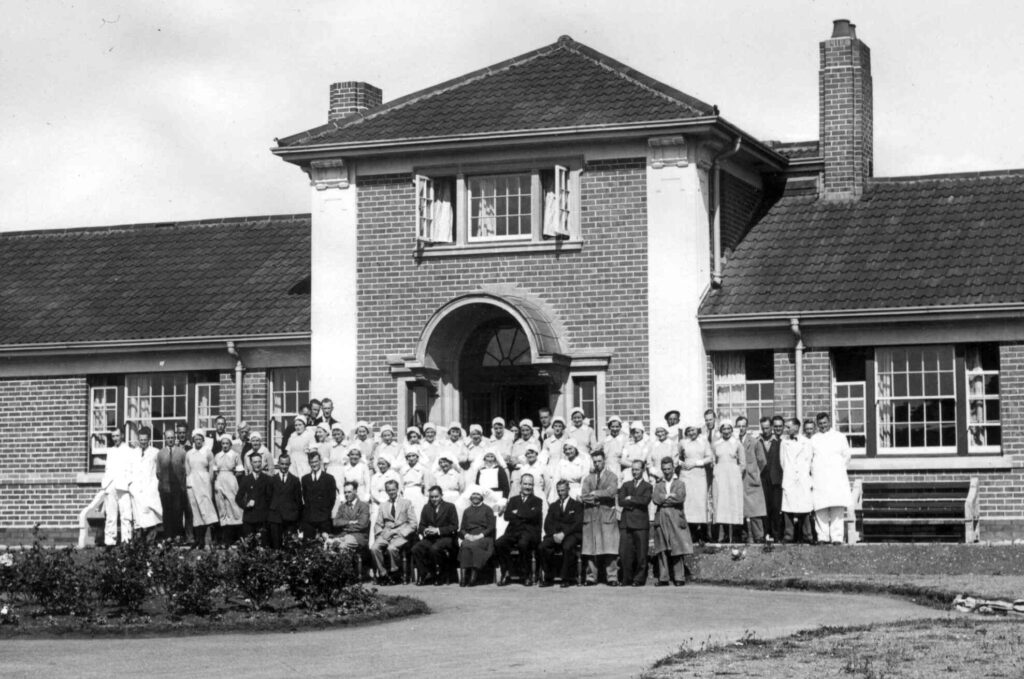
Recreation (Main) Hall
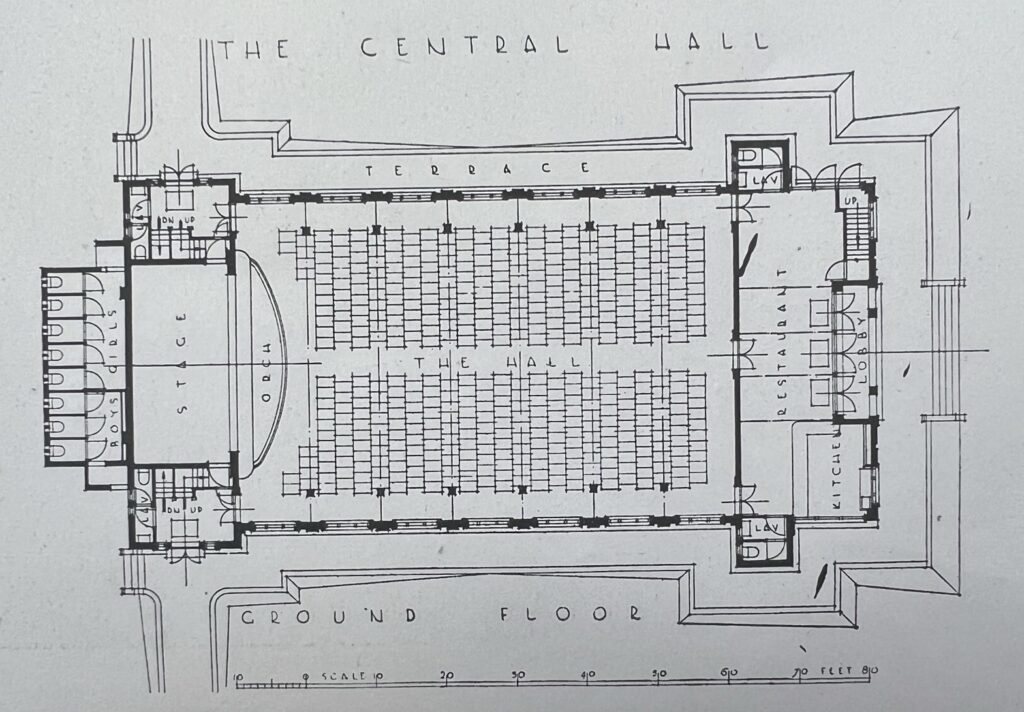
The Central Hall was situated below the Administration building on the central axis of the site, south of the Colony roadway. The Hall could seat 474 persons and was used for all manners of recreational and before the Chapel was built; religious purposes. At one end of the Hall opposite the main entrance was a stage with stage curtains and lights. There was Orchestra well in front of the stage, although this appears to have been removed later. Above the main entrance was a cinema box and a to the left of the entrance was a cafe for the use of visitors. Apparently the hall floor was heated.
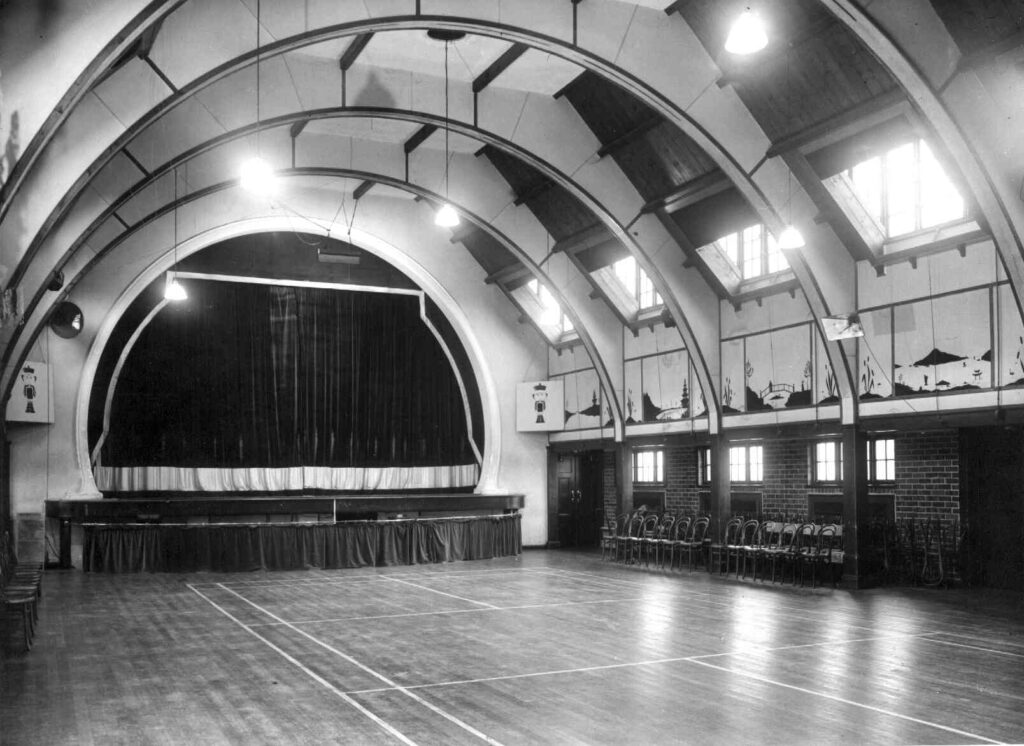
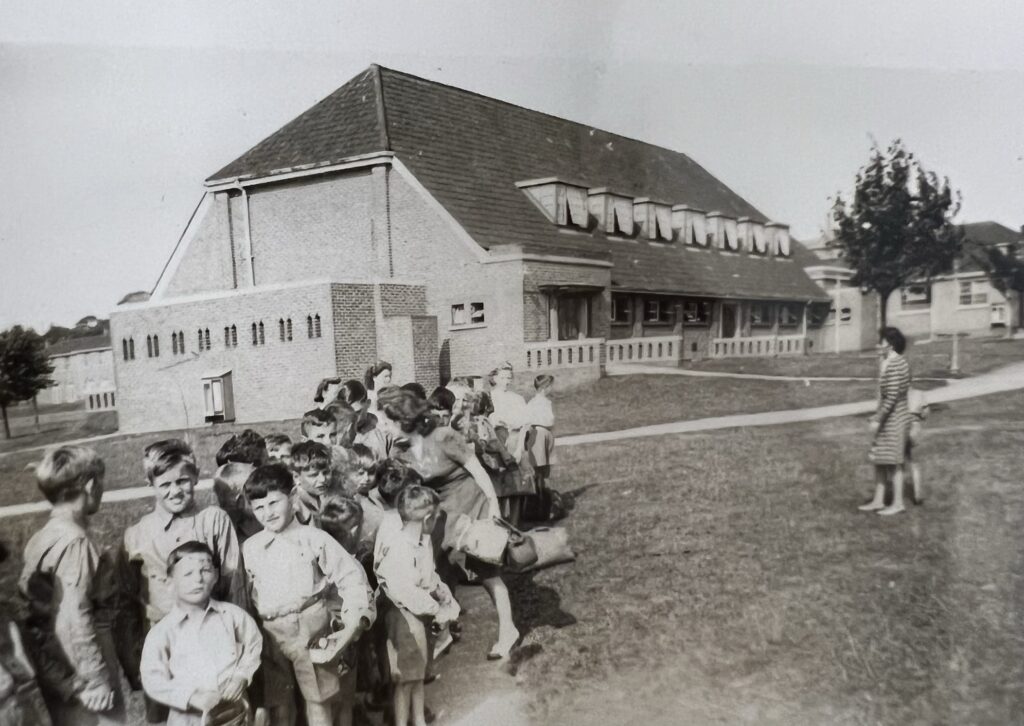
Kitchen & Bakery
Hortham had a sizable kitchen block, it was built with 600 patients in mind to feed. The central kitchen with one central double coal fired range and one draw plate oven has been erected originally. The kitchens had all the mod cons required to feed so many people. The kitchen block consisted of 14 rooms of storage, serving rooms and vegetable preparation rooms.
The Bakery originally consisted of one two-deck steam pipe drawplate oven with separate furnace to each Baking Chamber; one kneading machine, sifter and tempering tank.
Between these two buildings the Steward’s Store is situated with unloading shed, Steward’s and Clerk’s Offices overlooking the Kitchen Yard. Serving Rooms at each end and separate rooms for different food groups.
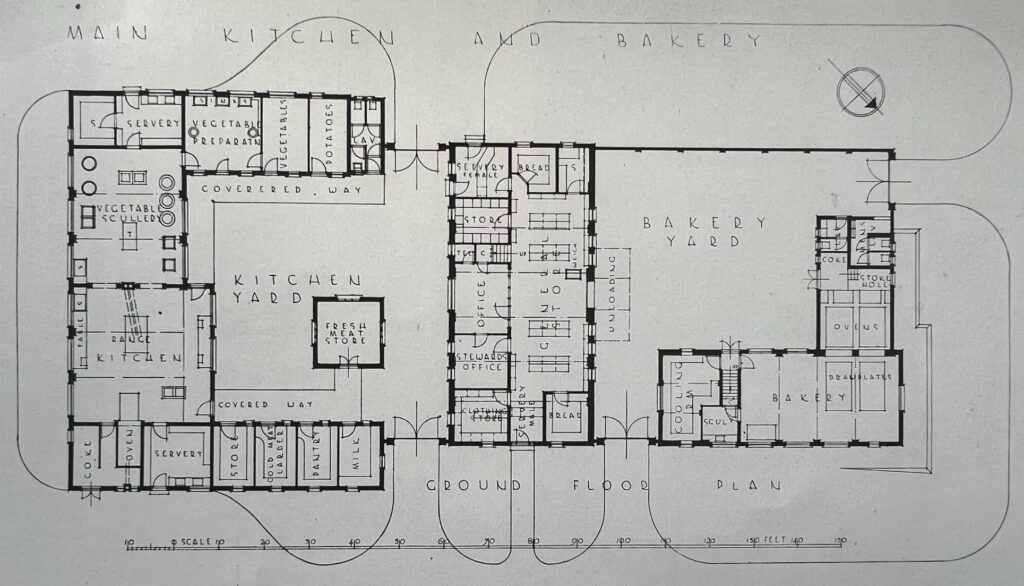


Hospital
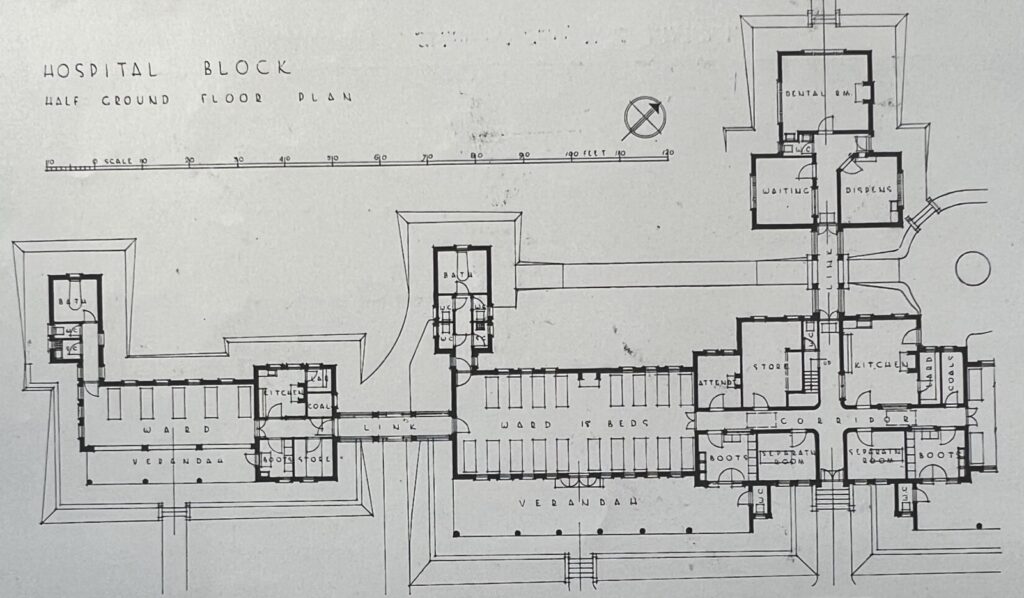
The Hospital contained wards designed for 39 patients with two separation rooms intervening. The administration rooms consisted of Kitchen, Stores. The sick rooms for Nurses are centrally placed. Behind is the medical unit consisting of a Consulting or Dental Room, Dispensary and Waiting Room. At each end of the Hospital building there have been erected Tuberculosis ‘wings’ for isolation providing accommodation for 10 patients and these were with separate administration areas. They were connected with the main Hospital buildings by covered walkways.
I don’t have any images from inside the hospital. The ones I thought were from inside, are actually from the Ministry of Defence emergency hospital that was later build in the early 50’s and used as a hospital ward for some time.

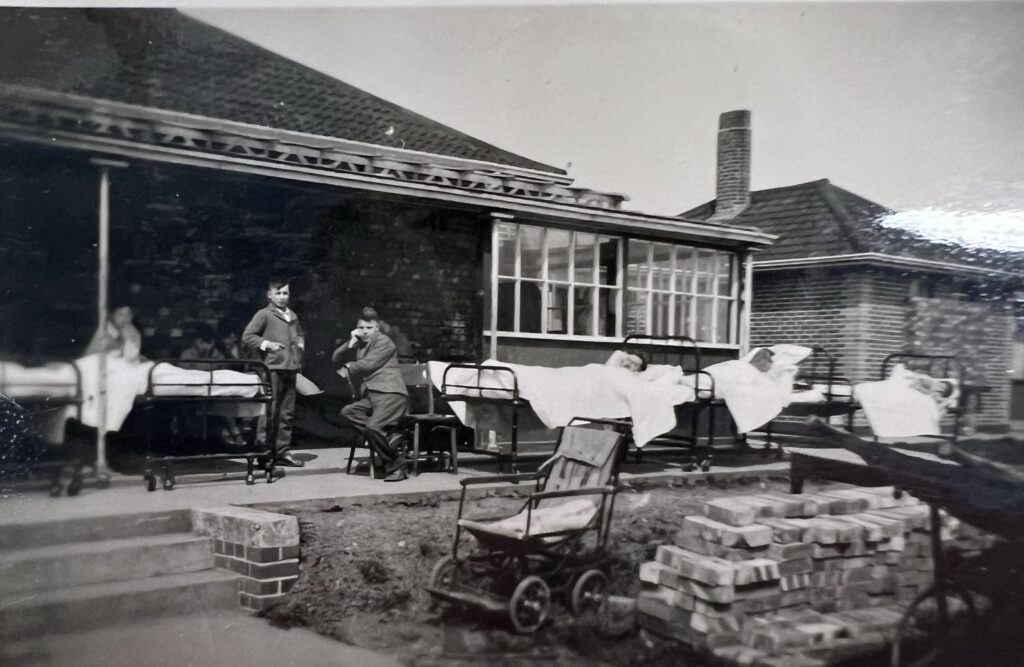
School
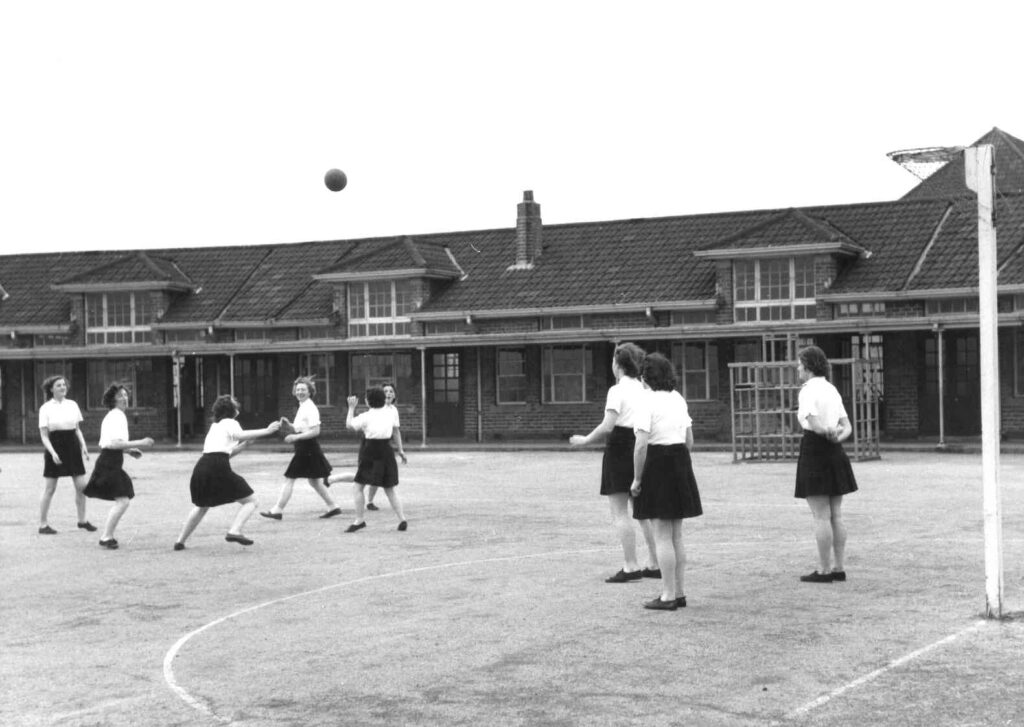
A School for the younger patients had been provided that was capable of accommodating 150 patients. The classrooms could be separated by movable partitions. The building was a single storey structure and had been arranged to allow for the maximum amount of sunlight. On the south side of the school a verandah had been erected facing out to a playground.

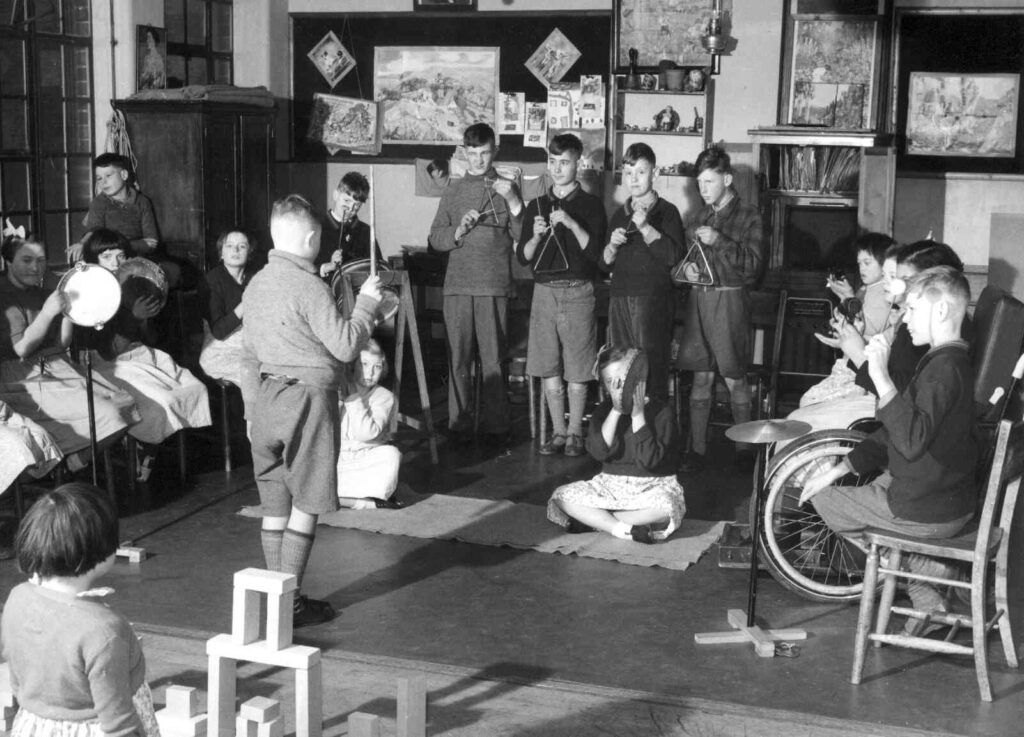
Nurses Accommodation

To the right of the Hospital is the Nurses’ Home providing accommodation for the Matron, Nurses, and Maids. The building is in three storeys, the ground floor containing Recreation and Mess Rooms, Sitting Rooms, Kitchen, whilst the upper floors contain the bedrooms, each nurse being provided with a separate room.

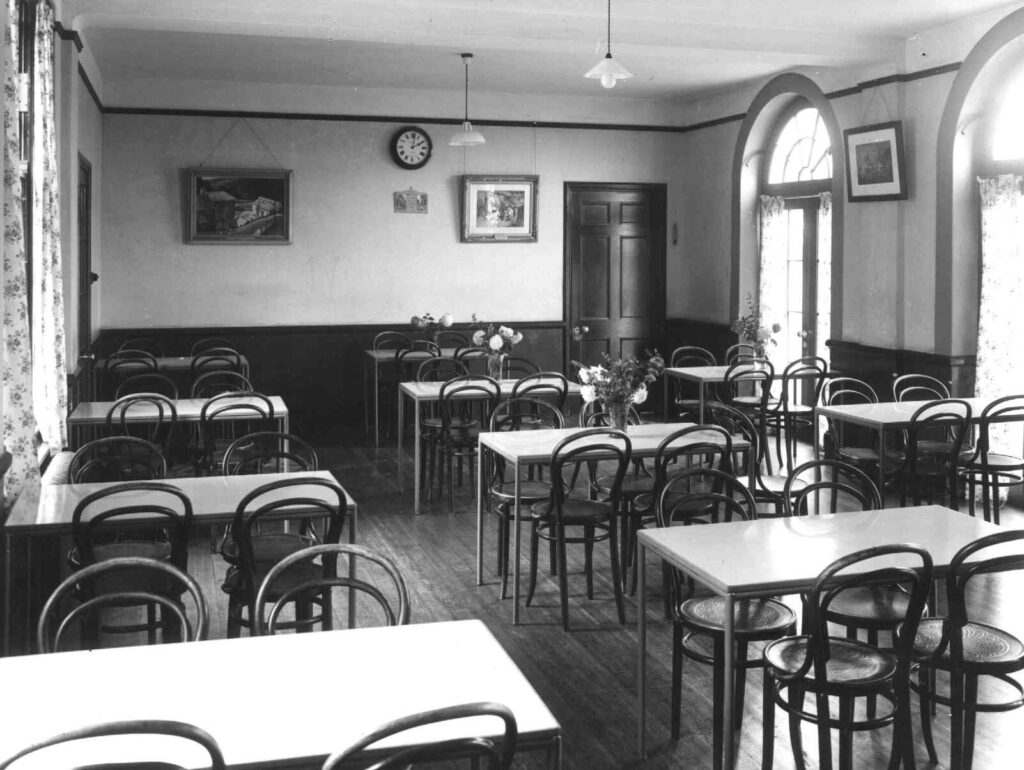
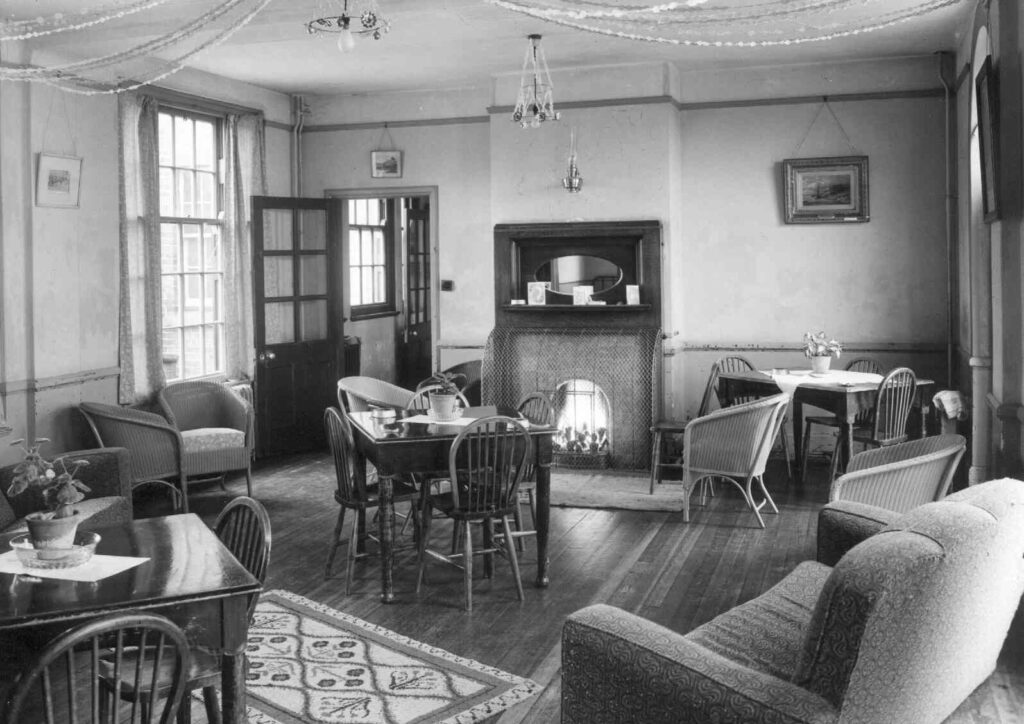
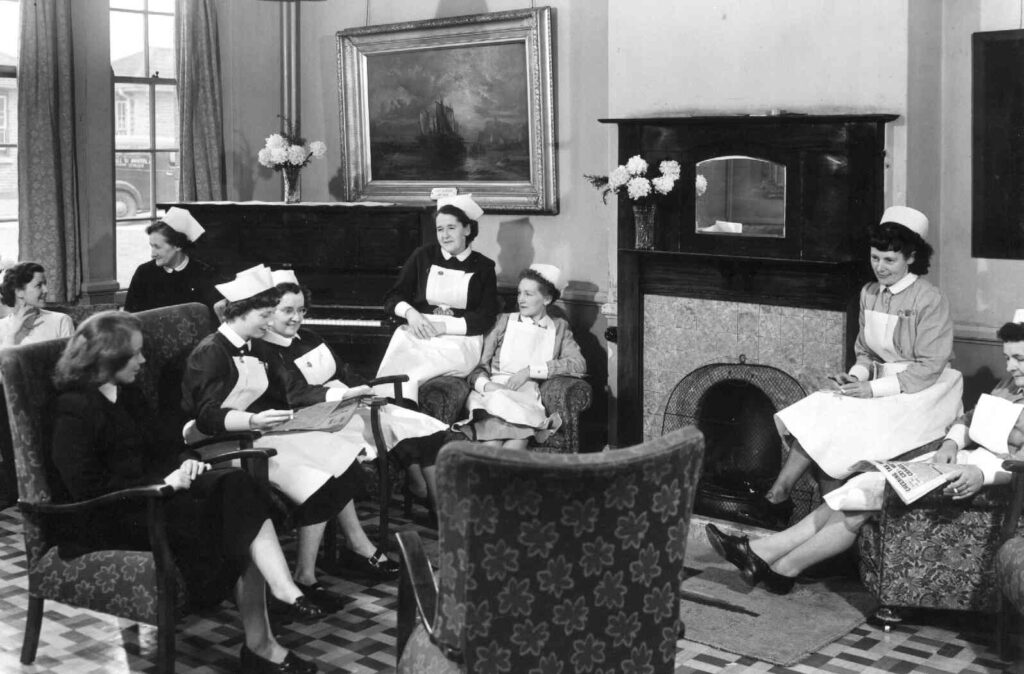
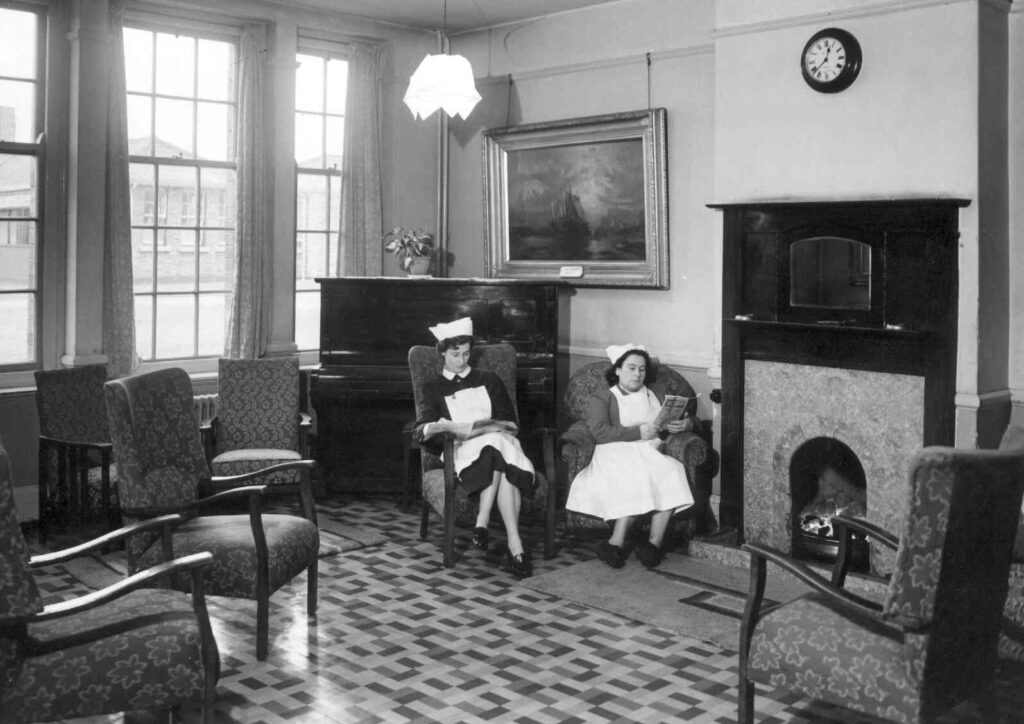
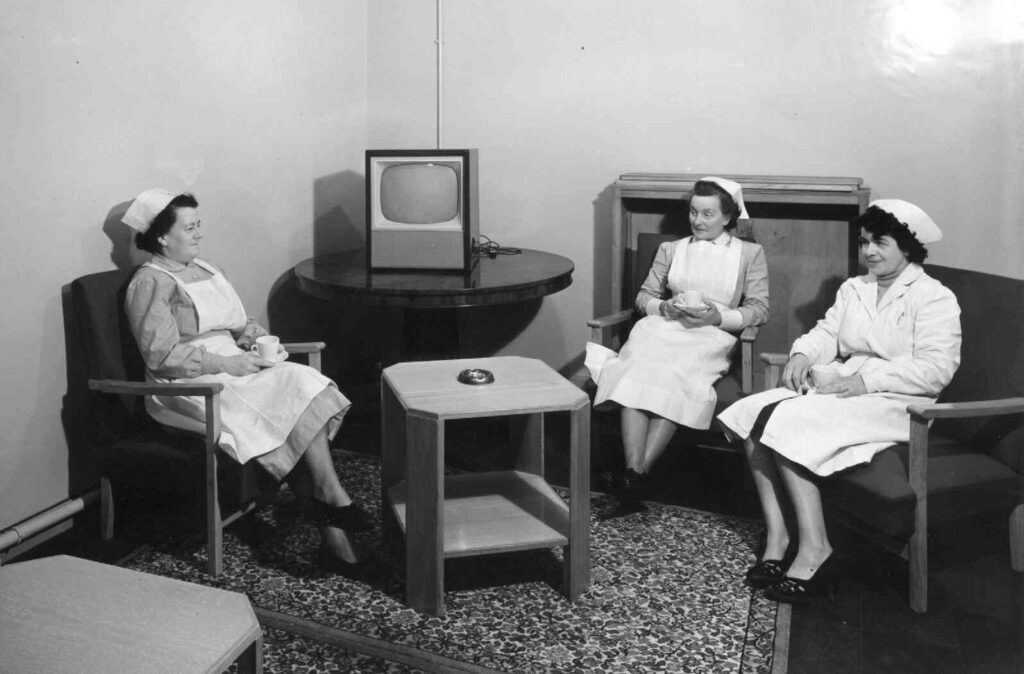
All the pictures below are from a training book aimed at prospective nurses that show parts of the nurse’s accommodation, years unknown. Glenside Hospital Museum
Workshops & Laundry
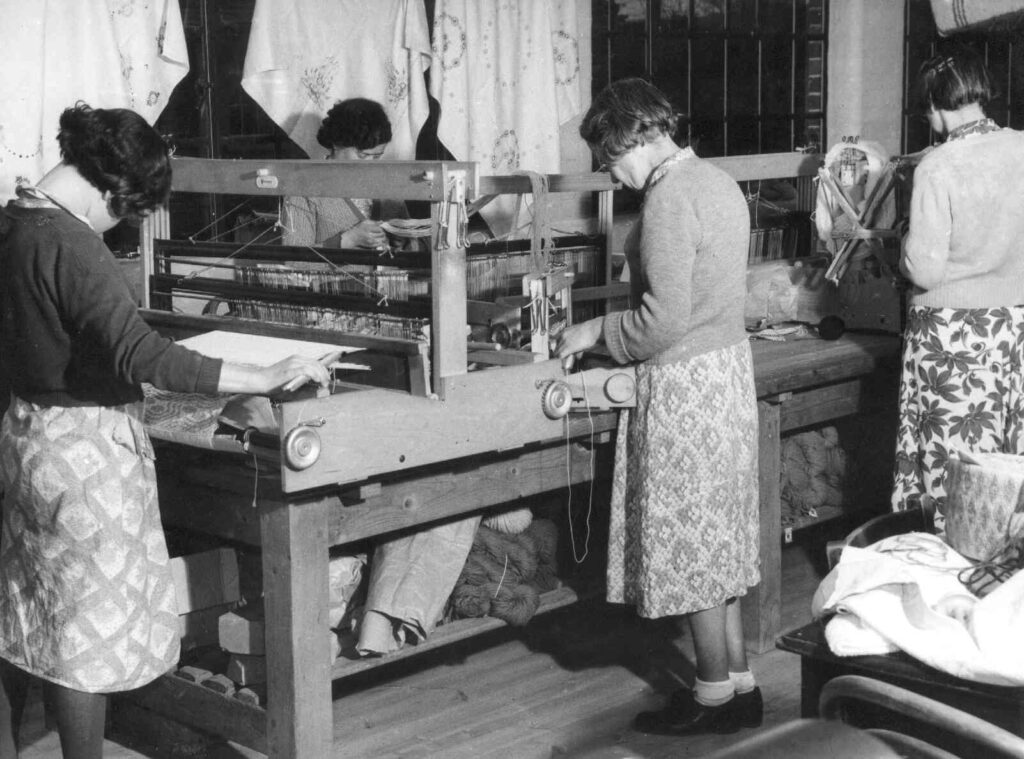
Training practical skills and crafts was considered part of the treatment of the patients, workshops had been provided for both male and female patients. The two workshops had been provided for the male patients and equally two for the female patients, the female workshops being intersected by the Linen Store.
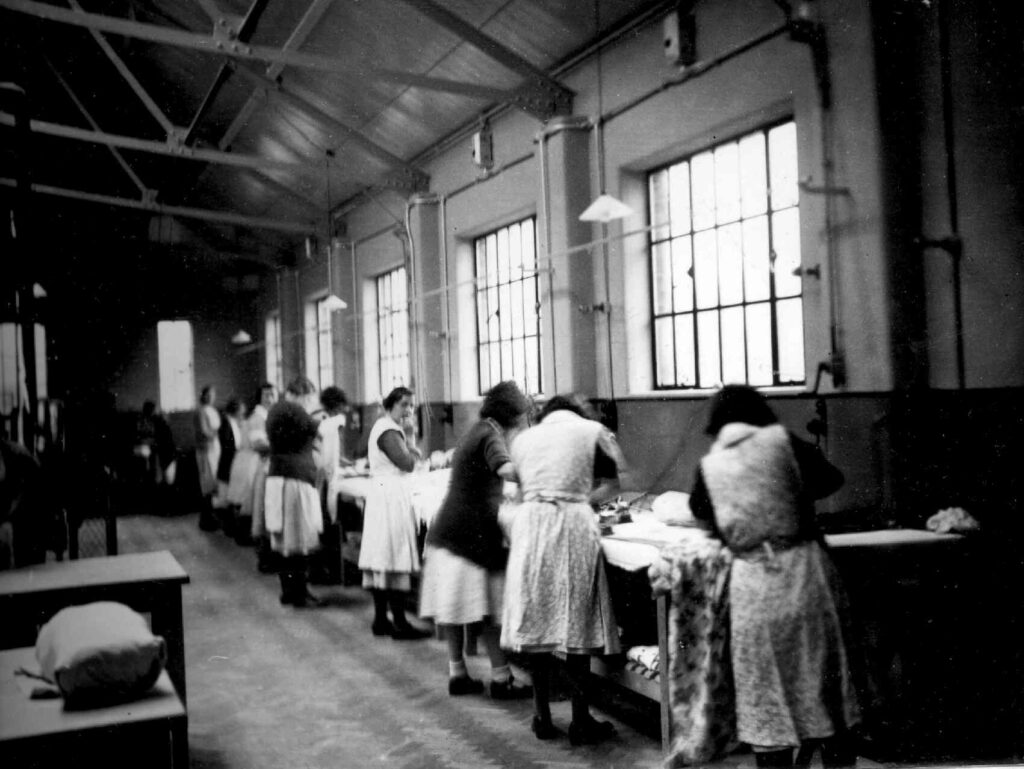
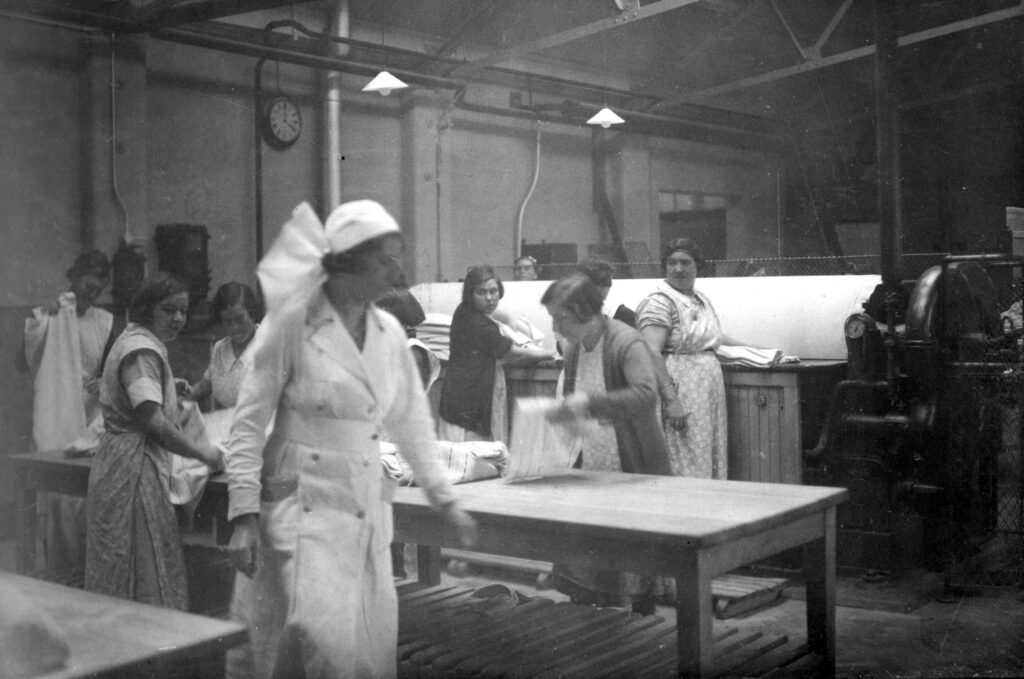
The Laundry contained disinfecting rooms, general, foul and staff washhouses, receiving, drying, ironing, and delivery rooms and offices. A bandage steriliser and a large drying yard had also been included. After being built, in the general washhouse there was four washing machines, two hydro extractors, one drying machine. As well as a number of sinks for hand washing. In the Ironing room there was one large and one small ironing machine. A handful of electric irons were also provided.
Others
Mortuary
The mortuary buildings were situated near the entrance to the Colony, a small single storey building attached to the porter’s lodge. The mortuary containing a marble slab and table, a Post Mortem room and wash-up sink. Sadly I don’t have any plans or proper pictures of these.

Gatehouse/Lodge
Located to the left hand side of the entrance. I don’t have any information as to what this building was used for in its early years but was later used for occupation therapy. I have read that there was a site office and weighbridge located near the entrance however I believe that may have been connected to the same building as the Mortuary.
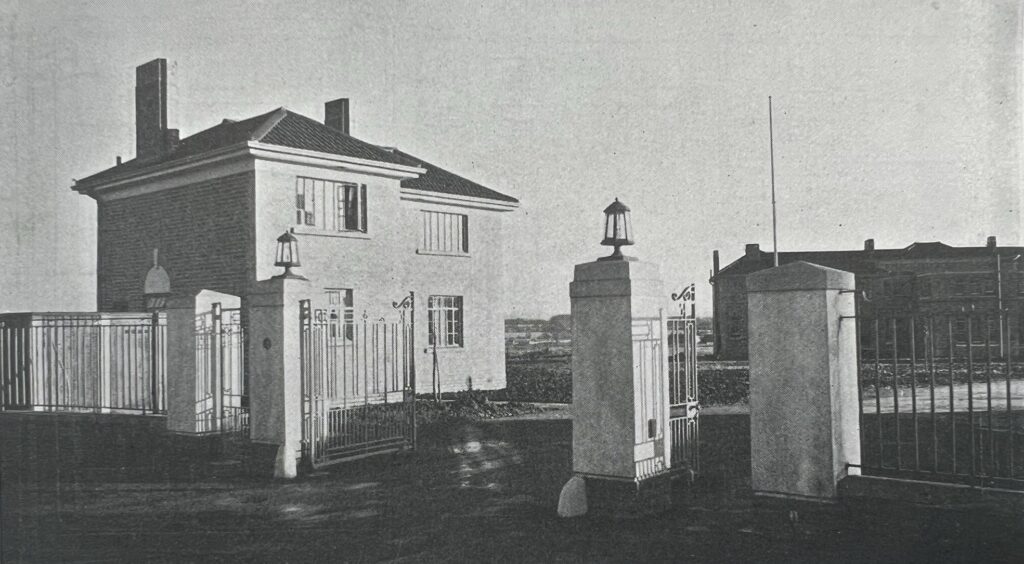
The Boiler House
The Boiler House originally contained two Lancashire Boilers 28 feet long and 8 feet in diameter and Economiser supplying Domestic Hot Water Service and steam to Laundry, Bakery, and throughout the Colony. Calorifiers were also supplied in the Calorifier Chamber for heating the Colony. One Hotwell feed tank, boiler feed pumps, two circulation electrically driven pumps were also provided. The Boiler House includes a fitters’ shop, engineer’s room, fire engine, coal store and enclosed service yard.

Colony Farm
The area covered by the Colony buildings was approximately 60 acres leaving roughly 66 acres of land for cultivation and other use. On the lower portion of the estate south of Woodlands Lane farm buildings had been provided for the purpose of growing/managing stock to supply the Colony. Greenhouses were later added. The Colony farm buildings survived much longer than the rest of the hospital, they were demolished in 2020 to make way for the development of the land for a football pitch.
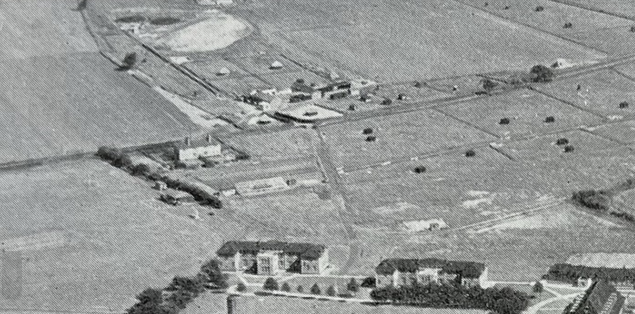
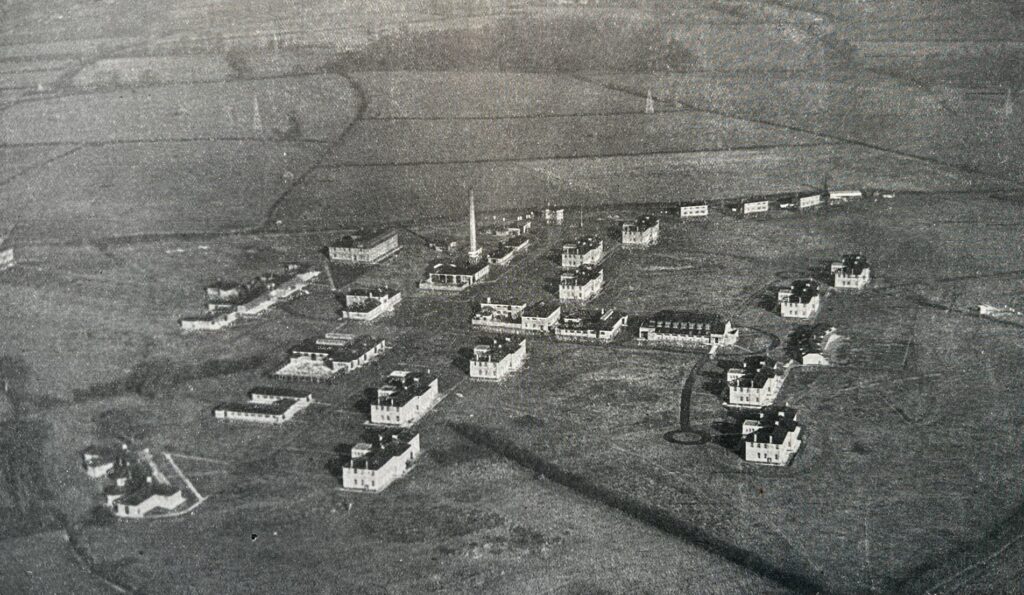
Much of this text was summarised from the City & County of Bristol ‘Opening of Hortham Colony’ booklet which came from Glenside Hospital Museum archives
